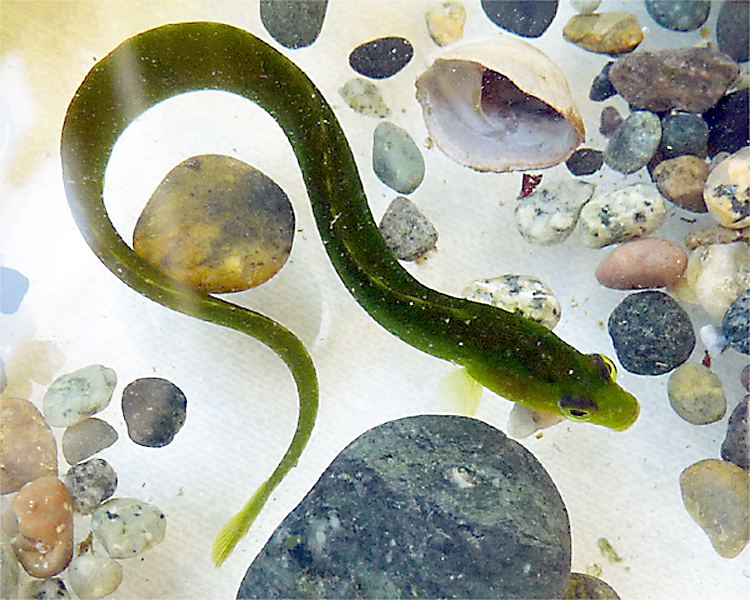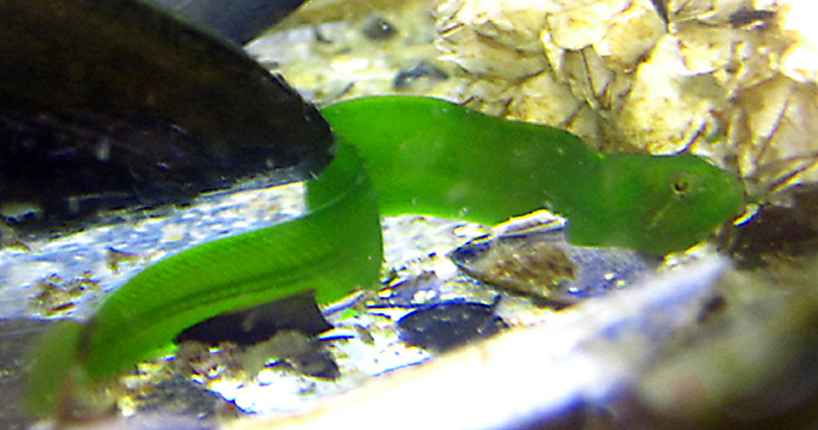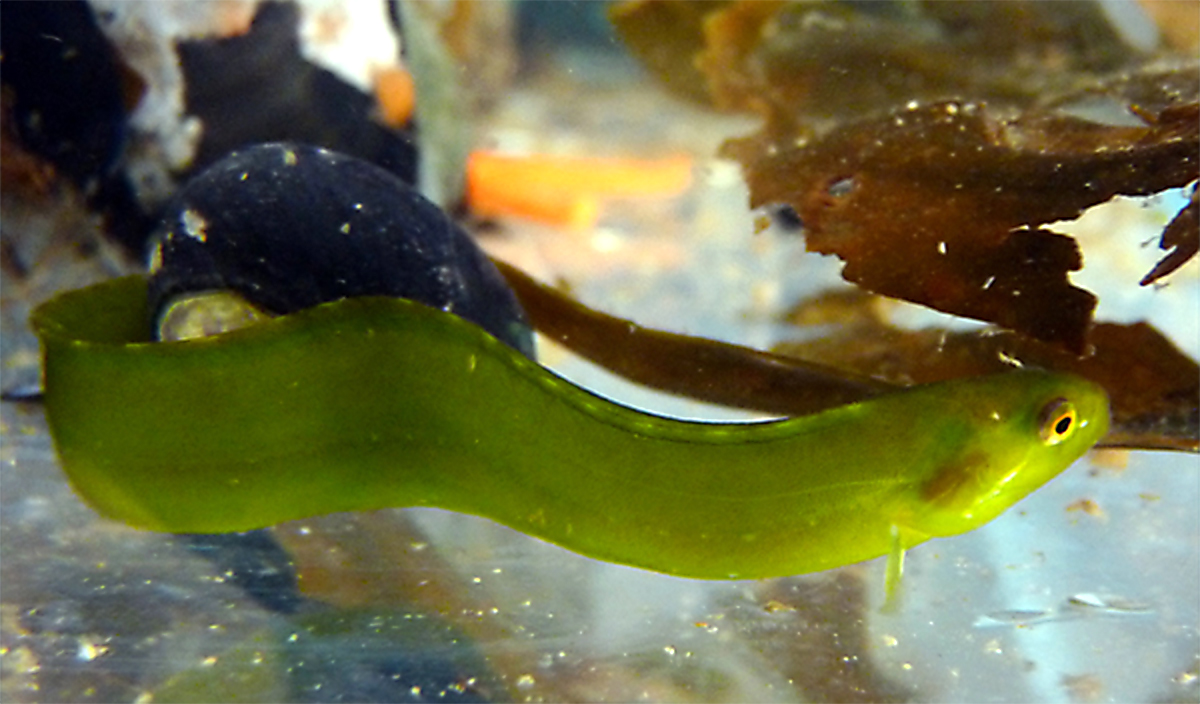The Rockweed Gunnel
By Gabrielle Lepage and Angel Antonio (updates by Rex Sherratt and Ian Templeton)
Common Name: rockweed gunnel, rockweed blenny, fucus blenny
Scientific Name: Apodichthys fucorum (formerly Xererpes fucorum)
Size Range: 5-9 inches (12-23 cm)
Identifying Features: Rockweed gunnels have eel-like bodies that are elongated, slender and compressed. They have no pelvic fins and lack the eye bar seen in the penpoint gunnel (Apodichthys flavidus). They are one solid uniform colour that is often green, yellow or red to camouflage in the algae. They tend to be brightly coloured fishes and their eyes are a striking bright yellow. They also have small circular scales that tend to be difficult to distinguish. Rockweed gunnels have small conical teeth and their long dorsal fin has 75 to 100 flexible spines and is about twice the length of the anal fin.


Habitat: Rockweed gunnels are found in tide pools, deep inshore areas or at the bottom of the sea. They are often found within algae such as sea lettuce, or among rockweed. In the winter when there is less seaweed they are often found hiding under rocks. The rockweed gunnel is founr from Baja, California to northern British Columbia. They are frequently found in rocky tidepools around Vancouver Island.
Prey: Rockweed Gunnels are carnivorous fish and feed on crustaceans, mollusks, and copepods.
Predators: The likely predators of the Rockweed Gunnel are River Otters (Lontra canadensis), the Great Blue Heron (Ardea herodias), larger fish, and other marine birds such as gulls. The Staghorn Sculpin (Leptocottus armatus) is also another predator to the gunnels. Following the tides they enter eelgrass meadows and search for the gunnels below rocks or for other invertebrates buried under the mud. In order to hide from predators, gunnels tend to cover themselves underneath or between rocks and algae. The Rockweed Gunnel can survive out of water for 5 to 20 hours as long as it stays moist.
Photography by Gabrielle Lepage, Rex Sherratt and Ian Templeton
References:
Conlin, M. (2007). Enature.com. Retrieved January 9th, 2010 from http://www.enature.com/fieldguides/detail.asp?allSpecies=y&searchText=ro… GroupID=3&lgfromWhere=&curPageNum=1
Emerald Diving. (2010) Species Index. Retrieved January 6th, 2010 from http://www.emeralddiving.com/id_gunnels.html
eNature; America’s Wildlife Resource. Field Guides, Rockweed Gunnel. Retrieved May 2010 from http://www.enature.com/fieldguides/detail.asp?recnum=FI0093
Hart J.L (1988). Pacific fishes of Canada Fisheries Research Board of Canada.
Its Nature (2007-2009) Retrieved January 8th, 2010 from http://www.itsnature.org/sea/fish/gunnel/
Pacific Wild Life Foundation (2006). Retrieved January 9th, 2010 from www.pwlf.org/eelgrassmeadows.htm
Sempier, S. (2003) Marine Species with Aquaculture potential. Retrieved January 16th, 2010 from http://hmsc.oregonstate.edu/projects/msap/PS/masterlist/fish/rockweedgunnel.html
Sinica, A (July 15, 2009) FishBase Mirror. Retrieved January 8th, 2010 from http://www.fishbase.org/Summary/SpeciesSummary.php?id=3809

